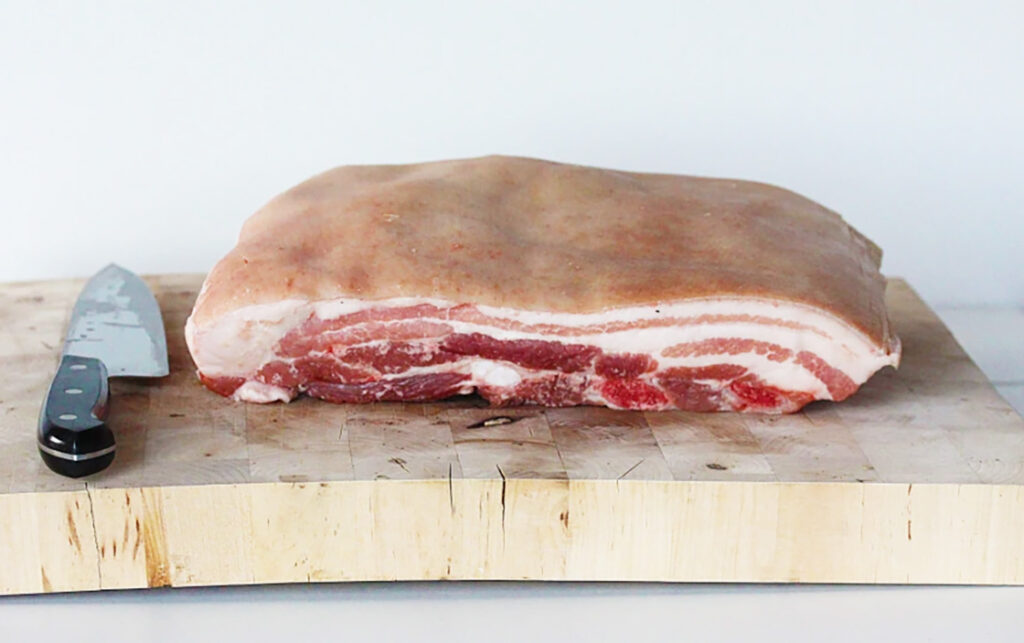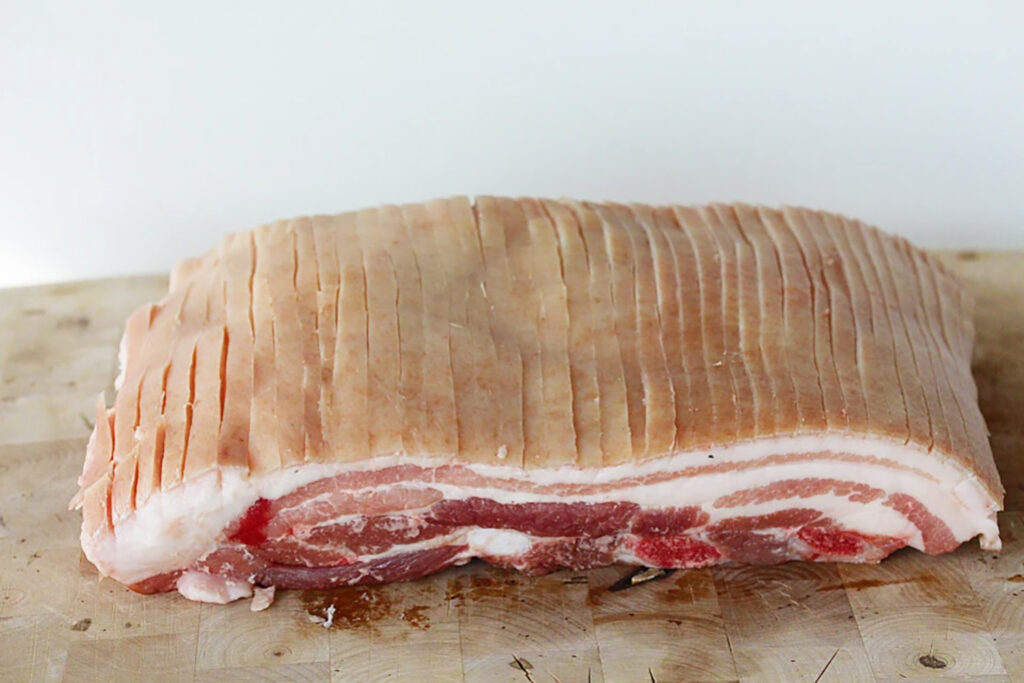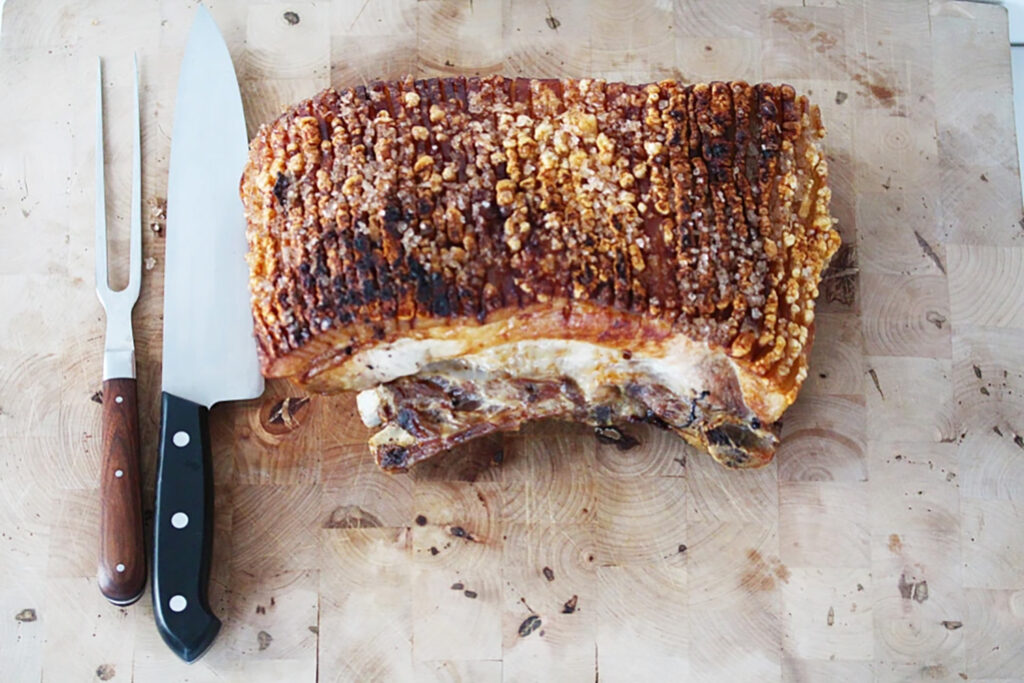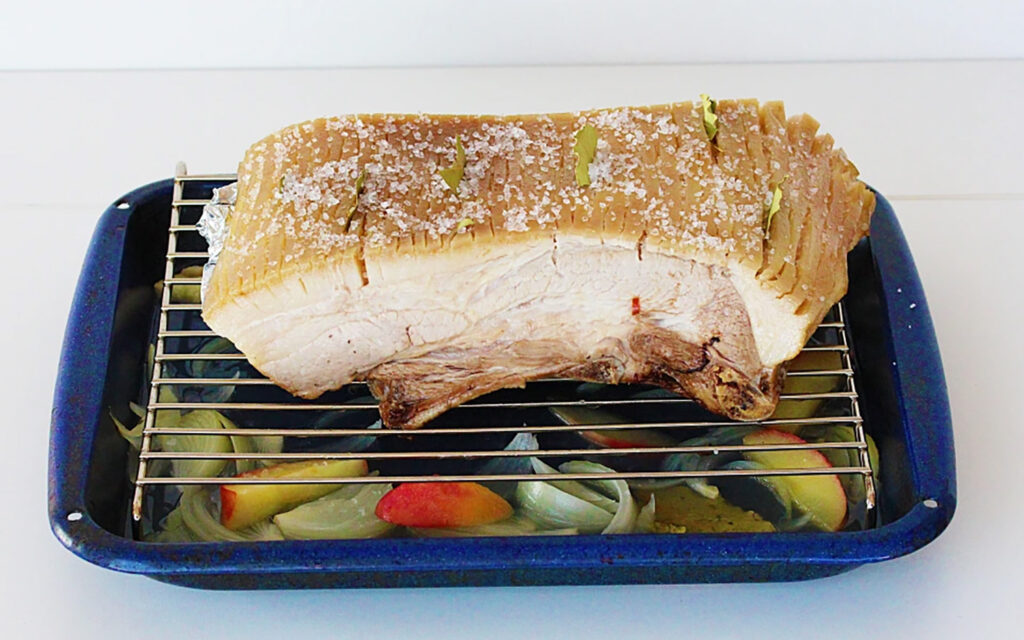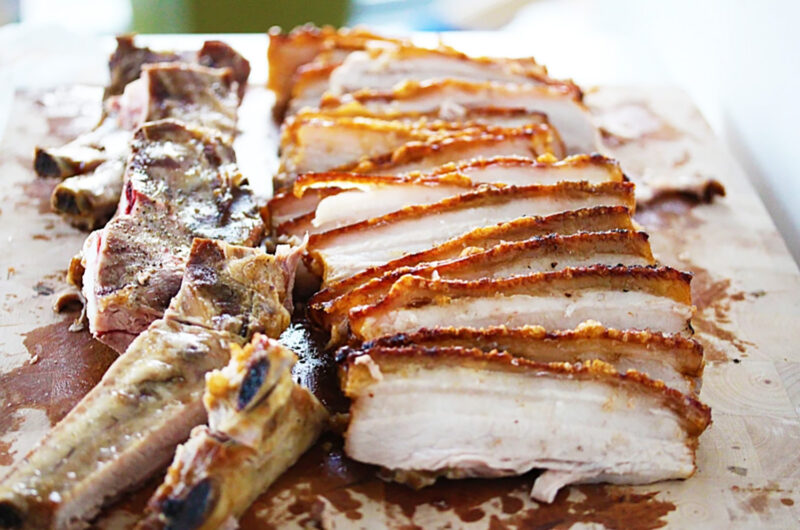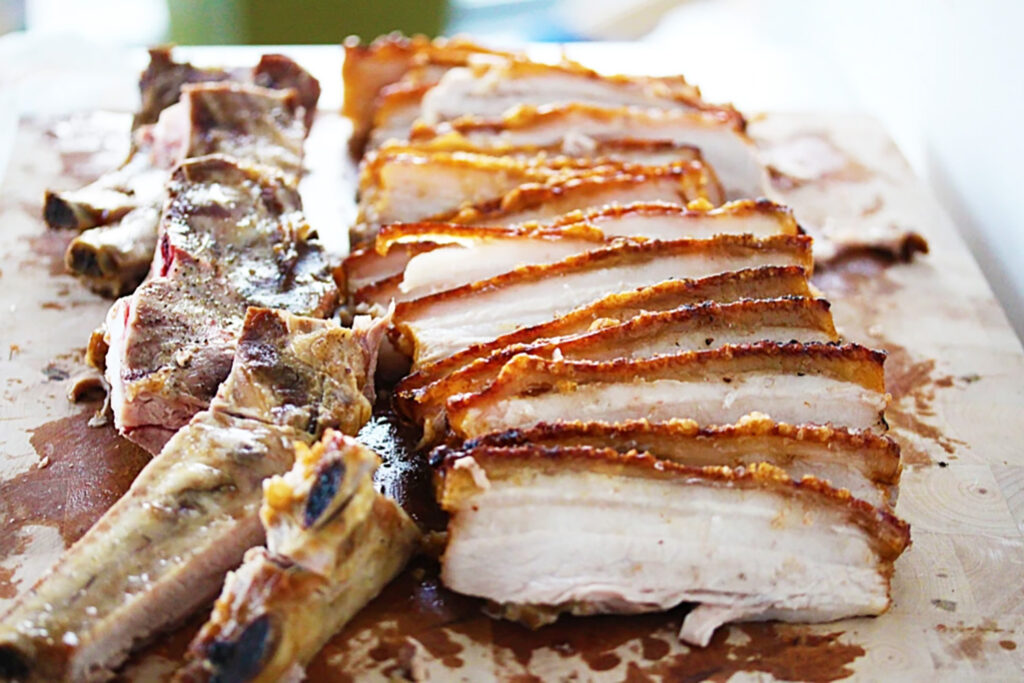
Flæskesteg is a classic Danish roast, usually served with boiled potatoes, caramelized potatoes, gravy and cooked red cabbage (or on a piece of rye bread with red cabbage, as I recommend in this post). Flæskesteg is still a popular dish, particularly for Sunday dinner among the older generation, and some people in Denmark eat flæskesteg for Christmas.
Flæskesteg is not easy to find in the U.S., mainly because you need to buy a piece of the pork neck or breast with the rind still attached. As a result, my flæskesteg recipe substitutes the traditional cuts with with a piece of pork belly, which is cheaper and easier to find.
My mum discovered that a great place to find pork belly for flæskesteg is at the “Mulberry Meat Market” on Mulberry St. between Canal St. and Bayard St., in New York’s Chinatown. Just walk to the back where the guys are slicing the meat and ask for a big piece of pork belly, and they will custom slice to the size you want. I usually get a piece that is approximately 13” x 7”. The slab sometimes has bones, which you can tell them to keep or remove. My husband loves the bones so I always keep them in the cut.
Recipe: Flæskesteg – Danish Pork Roast
Recipe by 2 Hungry Birds – Tina Course: Dinner, roastCuisine: Denmark16
servingsFlæskesteg is a classic Danish roast, usually served with boiled potatoes, caramelized potatoes, gravy and cooked red cabbage (or on a piece of rye bread with red cabbage, as I recommend in this post). Flæskesteg is still a popular dish, particularly for Sunday dinner among the older generation, and some people in Denmark eat flæskesteg for Christmas.
Ingredients
4.5 lbs 4.5 pork belly (13″ x 7″ cut – ask you local butcher to cut it for you)
salt
bay leaves
- Optional ingredients
2 2 carrots, chopped roughly
1 1 onion, chopped roughly
2 2 sprigs of fresh thyme
Directions
- Preheat the oven to 482 °F (250°C).
- With a sharp knife, slice grooves into the rind of the pork belly with a knife, at about ¼ inch spacing. Slice the rind only – if you slice through the meat, juices will run out and make the rind soft instead of crispy.
- Place the pork in a roasting pan with the rind facing downwards. Boil water and pour it into the pan just enough to cover the rind.
- Insert the meat on the lower shelf for about 15 min. in the oven.
- If you want to make gravy with the meat juices, you can add chopped carrots, onion, and fresh thyme to the water in the roasting pan. If you just want to eat the meat, you can skip this step.
- After 15 min in the oven, remove the meat and place a grill on the roasting pan. Place the meat on the grill with the rind side upward. Rub plenty of coarse salt on the pork belly rind, including the spaces in the sliced grooves. The salt will make the rind crispy. Stick a few bay leaves in between the grooves in the rind, and reduce the oven heat to 320°F (160°C). Be sure to level the meat as much as possible before putting back in the oven. You can use foil under the flæskesteg to make it level. This will help ensure the flæskesteg is evenly roasted.
- Roast the flæskesteg for about 50 min in the oven, or until the internal temperature reaches 130 °F (160°C). Be sure to add more water to the roast pan if the liquid disappears.
- Set the oven temperature to 482 °F (250°C). Choose an oven setting with a heat source above the meat (instead of below), such as Roast, Grill, or Broil.
- Put the meat in the middle shelf of the oven and roast until the internal temperature reaches 158-167 °F (70-75°C). Keep and eye on the flæskesteg to make sure that the rind is not burning. It can be a little challenging to make the rind crispy.
- Remove the flæskesteg from the oven and let it rest for about 10 min. Do not cover the meat since the rind will turn soft.
- Cut the meat until right before you are about to serve the food. The meat will turn grey if you cut it too early. Cut into the meat through the grooves that were previously made in the rind.
- If you are making gravy, decant the fat out of the liquid and strain the rest into a pot. While heating the gravy in the pot, mix ¼ cup of water with about two tablespoons of cornstarch, stir well, and then pour into the pot with the gravy. The gravy should slowly thicken. If you want the gravy thicker, repeat with water and cornstarch. Add salt and pepper to taste.
